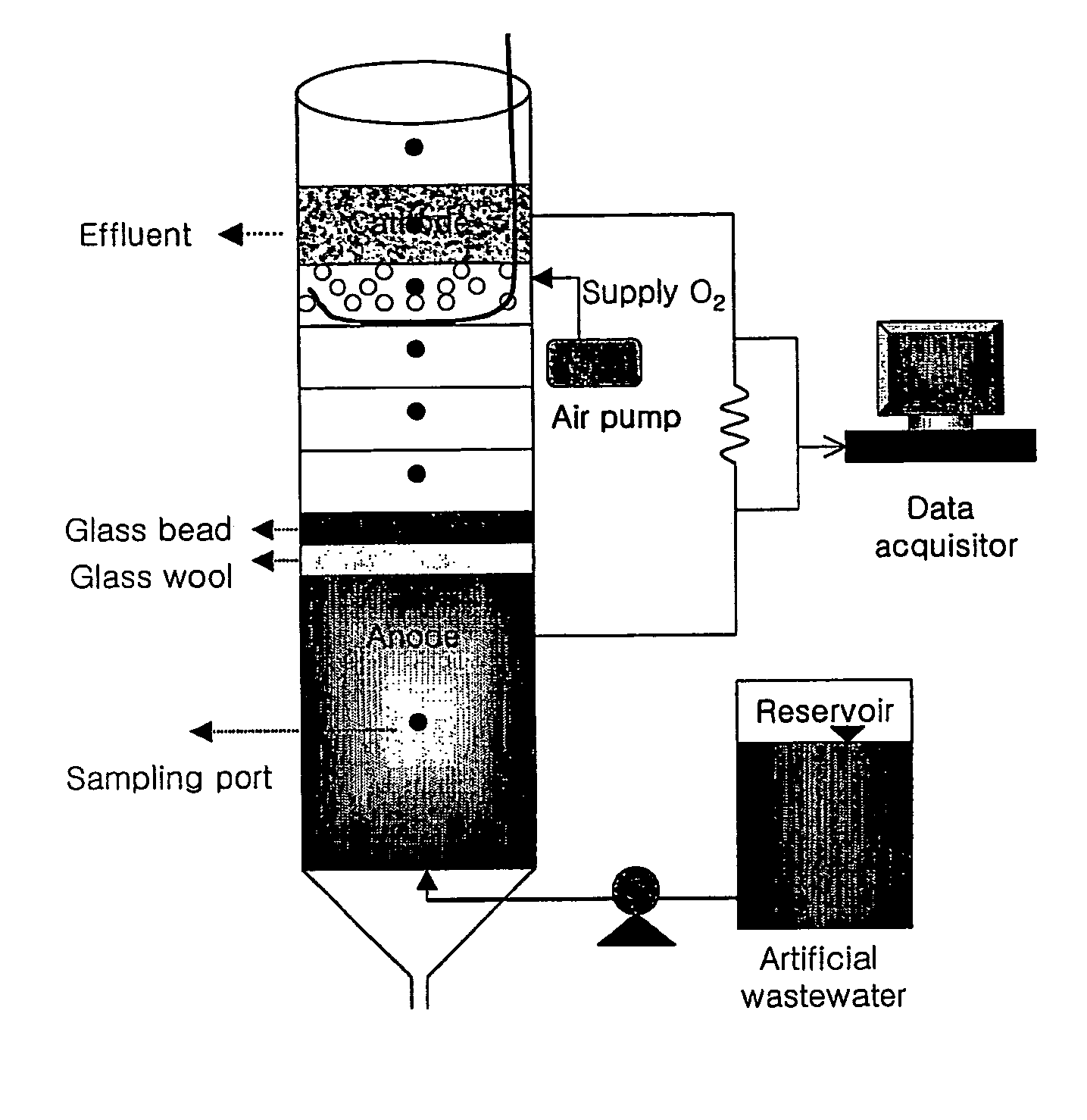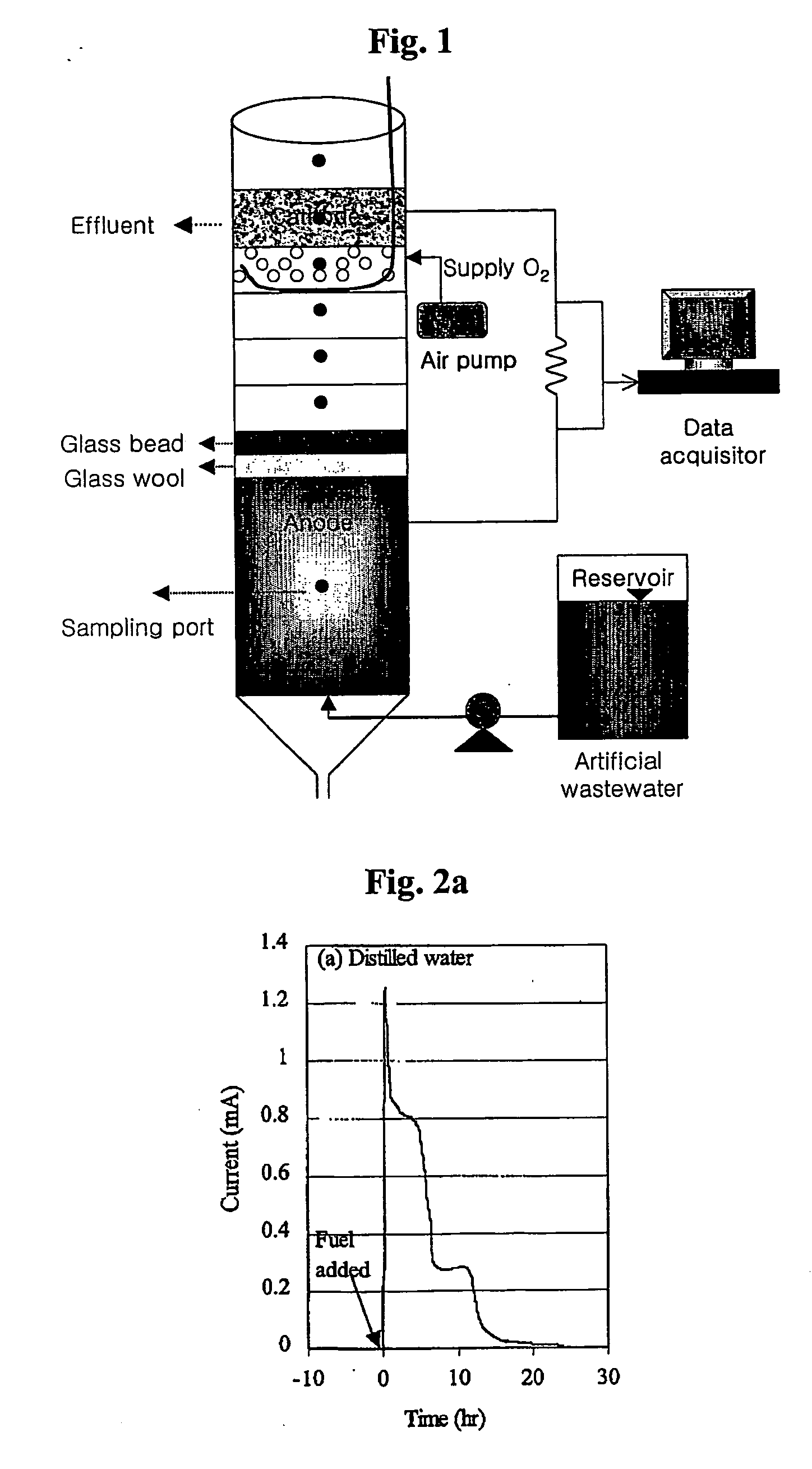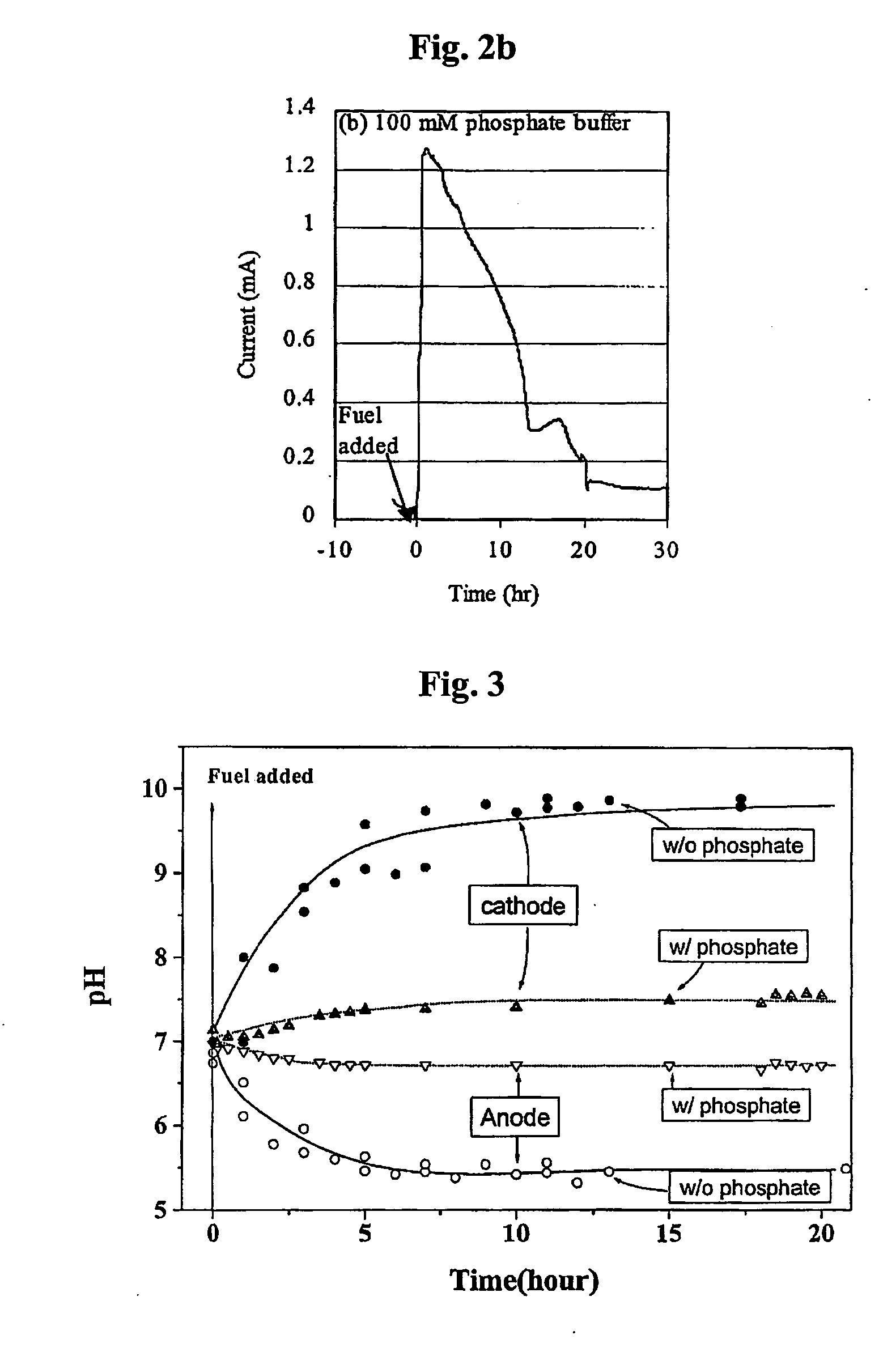Membraneless and mediatorless microbial fuel cell
a microbial and fuel cell technology, applied in the field of membraneless and mediatorless microbial fuel cells, can solve the problems of secondary pollution, difficult electron transfer to an electrode, and adhesion to the electrode, and achieve the effect of keeping the activity of microorganisms distributed in the anode compartment constan
- Summary
- Abstract
- Description
- Claims
- Application Information
AI Technical Summary
Benefits of technology
Problems solved by technology
Method used
Image
Examples
example 1
The Effect of the Buffering Capacity and the Feeding Rate of Oxygen, which are Rate-Controlling Factors, on a Series of Reactions in a Cathode Compartment
[0033] This example is to identify rate-controlling factors by measuring the electric current generated by using a microbial fuel cell having a cation-exchange membrane and the pH change in a cathode compartment.
[0034] 10Ω resistance was connected to a mediator-less microbial fuel cell while feeding 400 ppm wastewater to the cell, and the electric current generated was measured to record the results in FIGS. 2a and 2b. Further, the pH in the cathode compartment was measured to record the results in FIG. 3.
[0035]FIG. 2a shows the trend of electric current generated by using distilled water in a cathode compartment. When wastewater was fed as a fuel, an electric current of up to 1.3 mA was generated and then rapidly decreased to maintain around 0.8 mA. The electric current then further decreased to 0.3 mA. The result shows that al...
example 2
Enrichment Culture using a Fuel Cell having no Cation-Exchange Membrane
[0037] This example demonstrates that electrochemically active microorganisms essential to operate a mediator-less microbial fuel cell can be enriched using a fuel cell having no cation-exchange membrane according to the present invention.
[0038] For this purpose, artificial wastewater was used which had components other than organic substances acting as an electron donor, as described in Table 1 below. The inoculation source used for the enrichment culture was the aerobic digester sludge of a sewage disposal plant.
TABLE 1Components other than organic substances in artificial wastewaterComponentsComposition(NH4)2SO40.141gMgSO4.7H2O0.05gCaCl23.75mgFeCl3.6H2O0.25mgMnSO4.H2O5mgNaHCO30.105gTrace mineral solution10mlPhosphate buffer solution (1M, pH 7.0)50mlDistilled water940mlTrace mineral (Balows et al, 1991)Nitrilotriacetic acid (NTA)1.5(g / L)FeSO4.7H2O0.1MnCl2.4H2O0.1CoCl2.6H2O0.17ZnCl20.1CaCl2.2H2O0.1CuCl2.2H2O...
example 3
Effect of the Feeding Rate of Oxygen to the Cathode Compartment on the Performance of a Microbial Fuel Cell
[0042]FIG. 5 shows the result of electric current generated by changing the rate of air fed to a cathode compartment while feeding 300 ppm artificial wastewater to an anode compartment. A microbial fuel cell was operated under conditions such that air was not artificially fed and oxygen was absorbed via the water surface of the cathode compartment. As a result, 0.15 mA electric current was generated. When air was fed at a rate of 60 ml / min, however, the generated electric current slowly increased to 2.1 mA. When the air feeding rate was increased to 200 ml / min, the large change in electric current observed at 60 ml / min was not observed. When the feeding rate was decreased to 20 ml / min, the generated electric current decreased to about 1.7 mA. When air was fed at a rate of 60 m / min, the concentration of dissolved oxygen in a cathode compartment was measured to about 7.5 ppm. Th...
PUM
| Property | Measurement | Unit |
|---|---|---|
| height | aaaaa | aaaaa |
| height | aaaaa | aaaaa |
| diameter | aaaaa | aaaaa |
Abstract
Description
Claims
Application Information
 Login to View More
Login to View More - R&D
- Intellectual Property
- Life Sciences
- Materials
- Tech Scout
- Unparalleled Data Quality
- Higher Quality Content
- 60% Fewer Hallucinations
Browse by: Latest US Patents, China's latest patents, Technical Efficacy Thesaurus, Application Domain, Technology Topic, Popular Technical Reports.
© 2025 PatSnap. All rights reserved.Legal|Privacy policy|Modern Slavery Act Transparency Statement|Sitemap|About US| Contact US: help@patsnap.com



